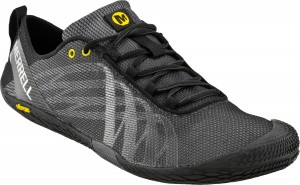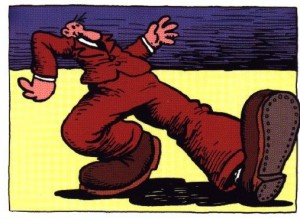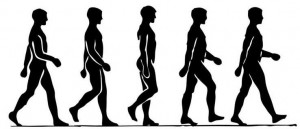 Our bodies are designed to walk barefoot but, for the most part, our bodies have not been developed to walk barefoot.
Our bodies are designed to walk barefoot but, for the most part, our bodies have not been developed to walk barefoot.
As much as I love to walk barefoot I wear sneakers or shoes during the course of my day when I am out and about. I have many pairs of shoes with all different levels and layers of support.
Since we are designed to walk barefoot it might seem that it would be easiest to walk without shoes. But walking correctly can actually be more difficult as your shoes become more minimal. 
Merrell makes my barefoot shoes of choice. I wear their running shoes as everyday sneakers and have two different pairs. The trail glove which is very minimal and the vapor glove which is almost non-existent. I love them both.
For the record, there are two other pairs of sneakers on my shelf—Mizuno flats that have a heel but barely, and a pair of Ecco sneakers that have more support that the others, but not much at that.
The gist of what I offer is that many people are too long in the front of the body and too short in the back of the body. Tight hamstrings and lower back muscles are opposed by overstretched quadriceps (that are also full of tension) and a rectus abdominis or sit-ups muscle that is to long for the body’s good.
This type of posture leads to the walking pattern we see above in the iconic Keep on Truckin’ image from Robert Crumb. This is how most people walk—leaning slightly backwards and leading with the feet, heel first and heavy into the ground.
Oddly wearing traditional shoes with a heel and arch support can accommodate our poor posture and movement patterns by sort of helping to propel us forward because of the angle of the sole of the shoes and the height of the heel.
Where I am going with all this is that even though traditional shoes aren’t good for your feet or a natural walking pattern, they often make it easier to ambulate than barefoot shoes, or flat sandals, because of the imbalances that tend to dominate our bodies.
To go back to the beginning, just because we are designed to walk barefoot doesn’t mean we walk correctly if our shoes are off or lacking any support.
Walking correctly requires changing the body’s center of balance from being overly developed and dependent on the back of the body. We want to shorten the front a bit, and learn to initiate movement from the front plane of the body and the deep core.


